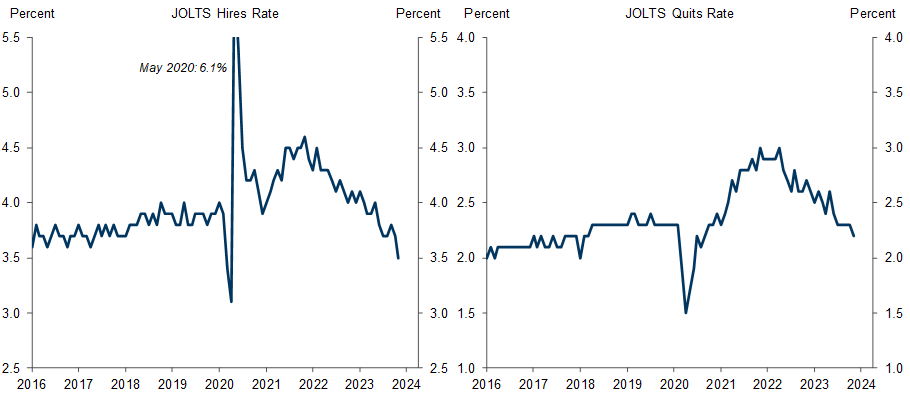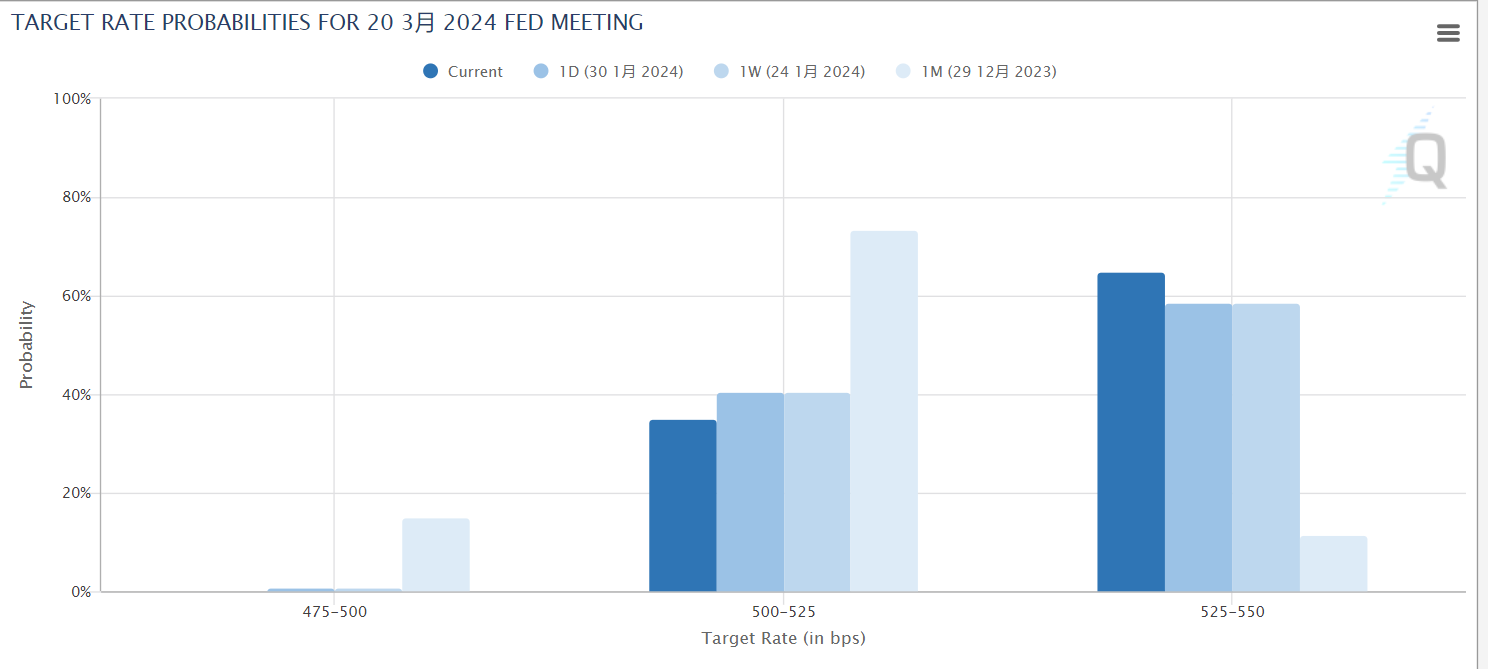Why is still March FOMC Starting Rate Cuts?
The January FOMC meeting of the Federal Reserve maintained the benchmark interest rate, as expected. Powell's wording indicated that almost all committee members believe that a rate cut is appropriate this year, but they do not see a rate cut in March as likely. The decision to cut rates depends on the economic situation.
The implication is that the Fed does not want to raise market expectations too soon, so it actively dampened expectations for a rate cut in March. However, there is a wide range of views within the Fed's committee on the rate cut.
Previously, the market implied a 50% probability of a rate cut in March and six rate cuts throughout the year. After the meeting, the implied probability of a rate cut in March decreased to 35%.
Rate cut no longer a bullish factor?
Looking ahead, even if a rate cut unexpectedly begins in March, the market may not view "rate cuts" as positively as it did at the end of 2023. The earlier the rate cut, the more it may signal a deteriorating economic situation, as the Fed only cuts rates earlier when it sees unexpected weakness in the labor market. If there are concerns about an unsuccessful soft landing.
The next meeting is on March 20th, with two non-farm payroll and CPI releases in the middle. Currently, the market expects overall and core CPI to fall below 3% by the second half of 2024.
If it falls too early, it may not be an optimistic signal. At the same time, a decline in employment data also represents a weakening of business activity.

Coordinator of fiscal policy?
Another possible factor that could prompt the Fed to cut rates earlier is coordination with fiscal policy in an "election year." The peak of government bond maturities in Q1 means that an early rate cut "helps" save on the replacement cost of maturing bonds, easing interest payment pressures on U.S. government departments.
The recently concluded Treasury Borrowing Advisory Committee announced the debt issuance for the first two quarters of this year, with an estimated issuance of $760 billion in Q1, a reduction of $55 billion from the planned issuance in October last year. Q2 is expected to issue $202 billion, less than half of the market's expected $500 billion.
Therefore, a rate cut in March can also complement more government bond maturities, providing liquidity to the market. After May, there may not be as much demand, and the pressure to replace government bonds will also decrease.
The implication is that there is a more urgent need for a rate cut in March, and as for the pace of rate cuts, it depends entirely on the economic situation and market liquidity.
Stocks or bonds?
In an election year, no one wants to cause significant economic volatility. Therefore, the overall stance of the Fed is accommodative, and as a preventive measure, supplementing liquidity is also essential to prevent events like Silicon Valley Bank (SIVBQ) in March last year from happening again. With this expectation, there is not much likelihood of a significant pullback in the stock market, or if there are short-term liquidity issues, there is no need to panic too much (or bargain hunt).
If investors expect a preemptive rate cut in March, they can bet on short-term bonds. After Q2, if the volatility of the US stock market increases, longer-term US bonds may perform better with reduced supply. Subsequently, if there is a significant pullback in the US stock market, the Federal Reserve may cut rates at a faster pace, but greater volatility may actually confirm deteriorating economic expectations and may not necessarily provide support.
Disclaimer: Investing carries risk. This is not financial advice. The above content should not be regarded as an offer, recommendation, or solicitation on acquiring or disposing of any financial products, any associated discussions, comments, or posts by author or other users should not be considered as such either. It is solely for general information purpose only, which does not consider your own investment objectives, financial situations or needs. TTM assumes no responsibility or warranty for the accuracy and completeness of the information, investors should do their own research and may seek professional advice before investing.



Great ariticle, would you like to share it?
Great ariticle, would you like to share it?